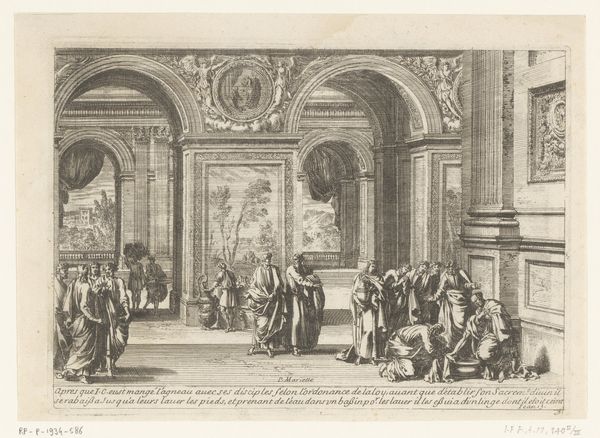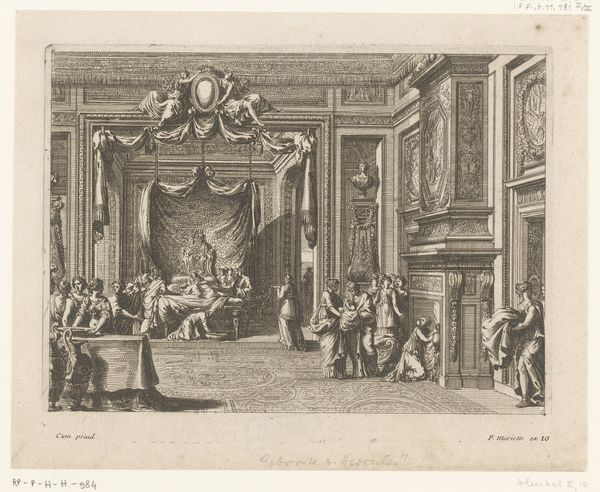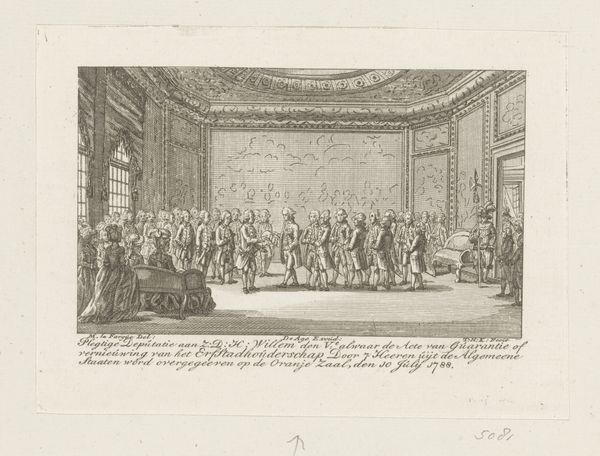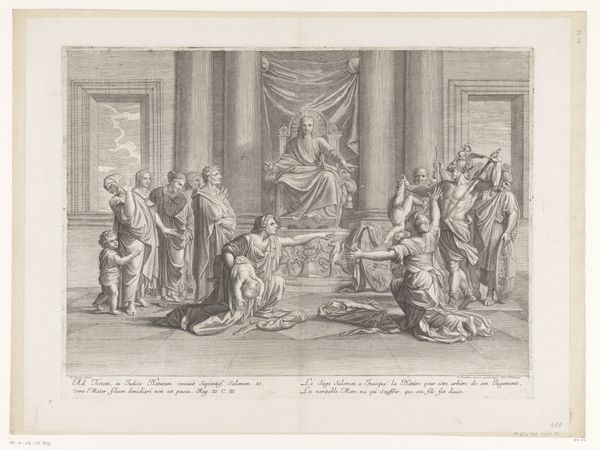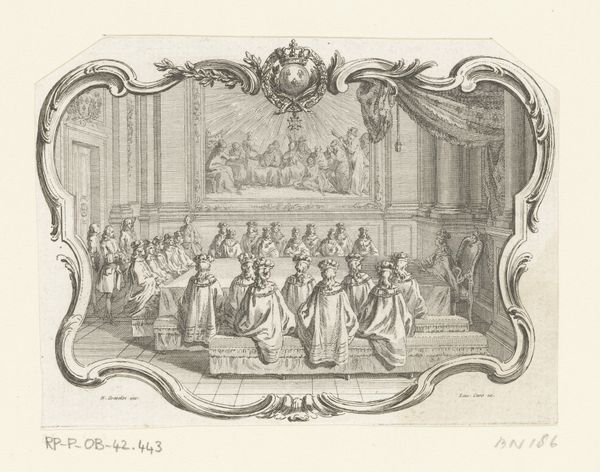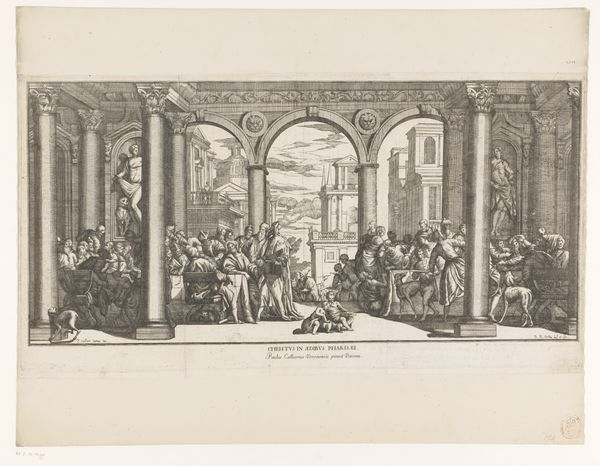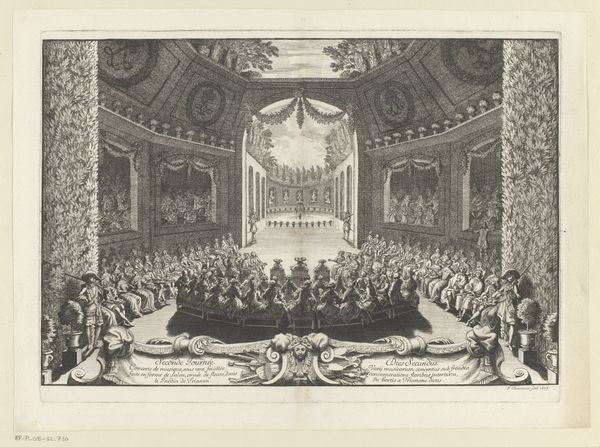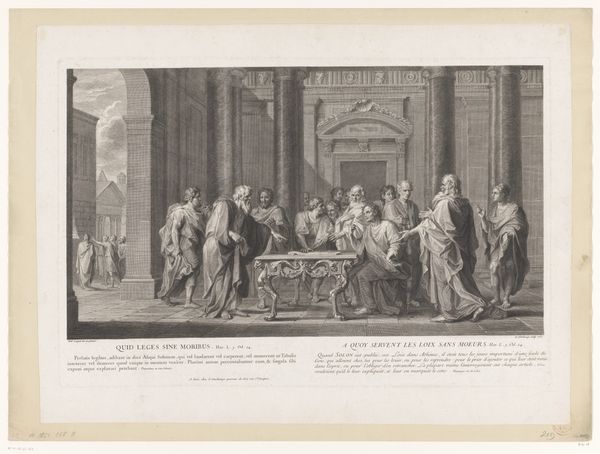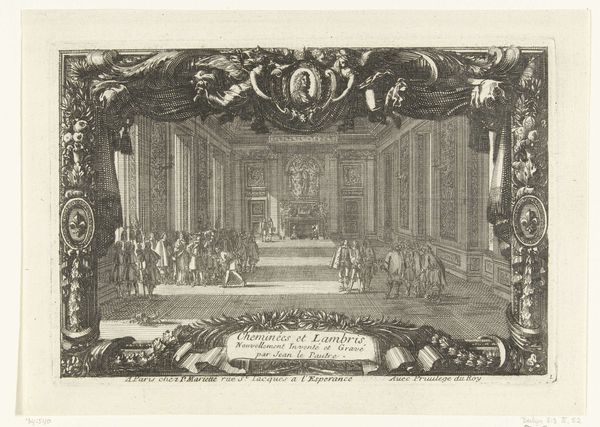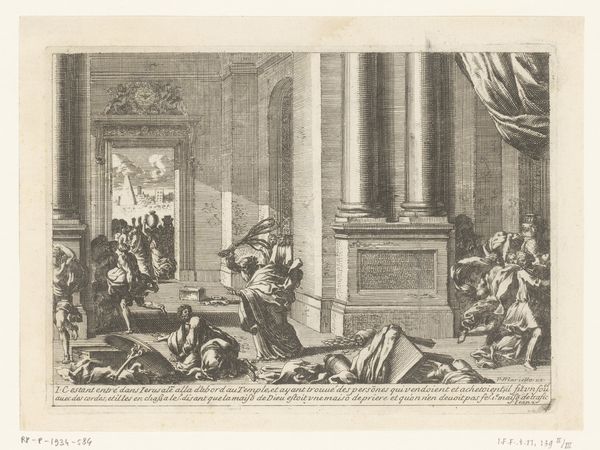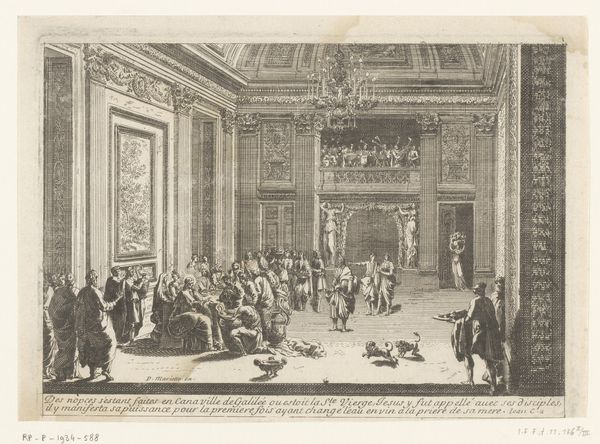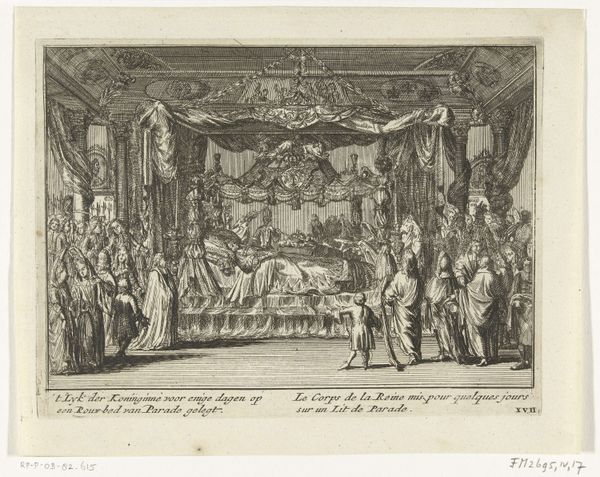
print, engraving
#
baroque
# print
#
old engraving style
#
landscape
#
figuration
#
history-painting
#
engraving
Dimensions: height 158 mm, width 220 mm
Copyright: Rijks Museum: Open Domain
Curator: Well, hello there. We're standing in front of "The Last Supper," an engraving crafted sometime between 1628 and 1682 by Jean Lepautre. Editor: It’s a busy scene. Lots of figures crammed in. I get this feeling of anxious anticipation… almost like a still from a tense play about to unfold. Does that resonate? Curator: Absolutely. The density amplifies the significance. You see, engravings like this often served to disseminate stories and moral lessons. Look at how the artist uses the architecture: those colossal columns framing the composition aren’t just decorative; they're structuring the narrative space, making the divine appear against a rather stagey setting. Editor: And how each apostle has a different reaction, beautifully captured with the artist's needle. They each feel isolated even when sat side-by-side. There's a guy on the left there looking a bit shifty as well! That almost feels anachronistic now - with the way that narratives of Judas and Jesus and the disciples have all changed over time... Curator: You're keying into something important - the historical and interpretative distance between the artist's time and ours. Back then, such prints brought these biblical scenes to wider audiences, often reinforcing specific theological perspectives on this last gathering between Christ and his followers, underscoring obedience, sacrifice, maybe a call to collective solidarity. And, for Lepautre, the classical architectural context helped bring an historical sense to what would have otherwise been a much more intimate affair. Editor: That's true - and the composition has the effect of 'mythologising' the event. Thinking about that distance makes me wonder who this piece was speaking to when it was new and how it may be received differently now... what conversations it opens up now about gender, race, and class? How were similar narratives depicted and told differently? Curator: Those are very salient questions about the social and political functions of imagery across centuries. Reflecting on these shifts allows us to reassess the underlying themes that shape our understanding of ourselves. Editor: This viewing has definitely shifted some things for me... there's a more sombre mood in my gut now. A thoughtful one, anyway.
Comments
No comments
Be the first to comment and join the conversation on the ultimate creative platform.
